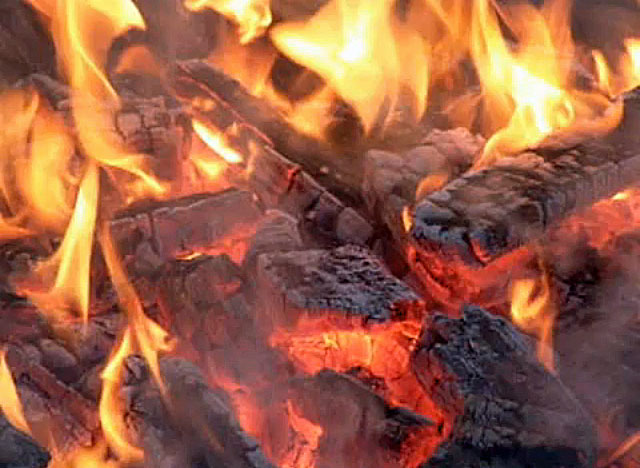Firewalking Physics: The Wrong Way to Walk on Hot Coals

Twenty-one people were treated for foot burns last week after walking across hot coals at a motivational seminar in San Jose, Calif. Rather than a blow to the practice of firewalking, the injuries suggest the setup was somehow bungled, says one physicist.
At inspirational speaker Tony Robbins' event, called "Unleash the Power Within," some 6,000 attendees attempted a mass crossing of coals that ended in "wails of pain, screams of agony," said a San Jose resident who was nearby at the time, according to the San Jose Mercury News. Three firewalkers were burned so badly they had to be rushed to the hospital.
What happened, exactly? "Basically, somebody made a big mistake there," said David Willey, a physicist at the University of Pittsburgh who has conducted research on the physics of firewalking. The event organizers might have used a kind of wood charcoal that burns too hot. Alternatively, people might have started firewalking too soon after the coals were tamped down and before they had sufficient time to cool off. Or, in a crowd of 6,000 firewalkers, some stragglers might have hobbled along too slowly.
The ancient ritual of firewalking usually works without pain or burning, Willey explained, because of how briefly people's feet make contact with the coals. Coal doesn't conduct heat well, so as long as it burns no hotter than 1,000 degrees Fahrenheit (538 degrees Celsius) and you walk across it quickly enough, you should arrive safely at the finish line without so much as a blister.
Willey should know. He's done "dozens" of firewalks, and "when I looked up the written literature on firewalking, it all turned out to be of a qualitative nature. I wanted to try and put some numbers on this, and ended up working with a Norwegian scientist with a computer model of a foot to predict what combination of factors is likely to produce a safe walk," he told Life's Little Mysteries. [Smart Answers for Crazy Hypothetical Questions]
Based on his research, he advises against using olive or locust charcoal because it burns too hot, meaning it can reach very high temperatures during combustion, while charcoal from pine, spruce and other evergreens burns away to gray ash instead of smoldering as impressive-looking glowing embers. "Cherry or maple — they give you nice-looking coals and still they don't burn that hot," he said, noting that the choice temperature for firewalking coals is a cozy 900 to 1,000 degrees F (482 to 538 degrees C).
Also important: You have to pat down the coals to create a flat surface on which to walk, to prevent people's feet from digging into the pile and scooping up embers. With that in mind, perhaps after 6,000 pairs of feet had churned up the coal lanes in San Jose, the coals were no longer flat enough, and embers were scooped. "It sounded like people were being tortured," the bystander said.
Sign up for the Live Science daily newsletter now
Get the world’s most fascinating discoveries delivered straight to your inbox.
Follow Natalie Wolchover on Twitter @nattyover or Life's Little Mysteries @llmysteries. We're also on Facebook & Google+.
Natalie Wolchover was a staff writer for Live Science from 2010 to 2012 and is currently a senior physics writer and editor for Quanta Magazine. She holds a bachelor's degree in physics from Tufts University and has studied physics at the University of California, Berkeley. Along with the staff of Quanta, Wolchover won the 2022 Pulitzer Prize for explanatory writing for her work on the building of the James Webb Space Telescope. Her work has also appeared in the The Best American Science and Nature Writing and The Best Writing on Mathematics, Nature, The New Yorker and Popular Science. She was the 2016 winner of the Evert Clark/Seth Payne Award, an annual prize for young science journalists, as well as the winner of the 2017 Science Communication Award for the American Institute of Physics.










